#pulp art 1963
Text

Man's Adventure Mar 1963
Victor Prezio
90 notes
·
View notes
Text
‘Trickster!’

Original artist: Richard Longmate (1963)
#pin up style#pin up art#comic book art#pin up cartoon#good girl art#pulp art#comic strip art#1960s#1963#Richard Longmate#Mousedrill
82 notes
·
View notes
Text
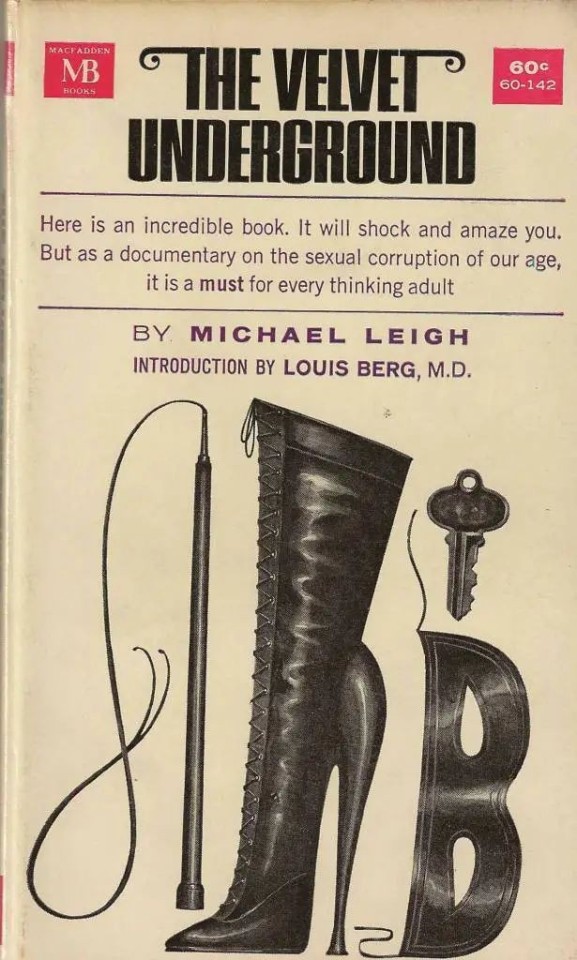
MacFadden Books 60-142 – Michael Leigh – The Velvet Underground
Michael Leigh – The Velvet Underground
MacFadden Books 60-142
Published 1963, 1st printing
Cover Artist: Paul Bacon Studio
“Come to the party – and bring your wife!”
#the velvet underground#macfadden books#pulp fiction#michael leigh#1963#first printing#paul bacon studio#book cover art
184 notes
·
View notes
Text

Assignment: Seduction by George Cassidy
Merit Books 6M406, 1963
Cover by Robert Bonfils
#robert bonfils#assignment: seduction#pulp#pulp art#painting#art#illustration#vintage#paperback cover#1963#1960s
107 notes
·
View notes
Photo
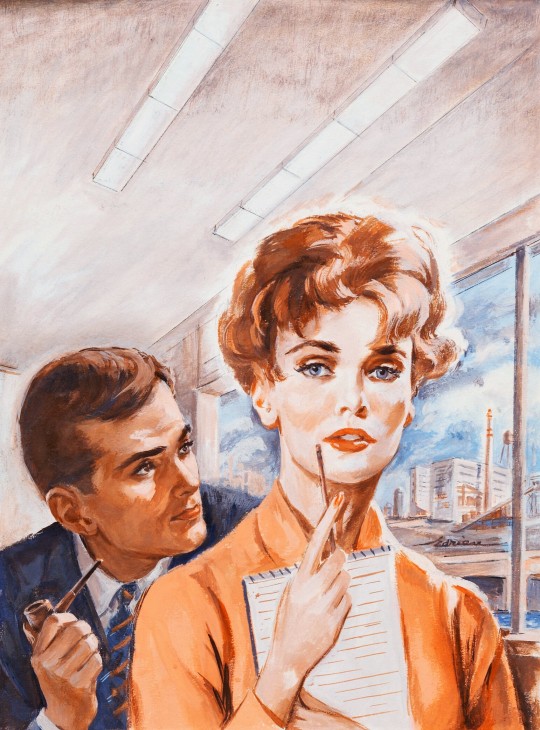
Personal Secretary - art by Edrien King (1963)
#edrien king#pulp art#personal secretary#pulp artist#cover art#girls career novels#ellen randolph#avalon books#sixties#1963
73 notes
·
View notes
Text

Vintage Poster - The Mark Of Zorro (Spanish)
Art by MAC
20th Century Fox (1963)
#Posters#Film#Zorro#Mark Of Zorro#Pulp#Vintage#Art#Tyrone Power#Linda Darnell#MAC#20th Century Fox#20th Century#Fox#Spain#Spanish#1963#1960s#60s
34 notes
·
View notes
Photo

A book you very likely don’t have on your shelf #300
Cover by Roy G. Krenkel -- 1963
#book cover#cover art#coverart#vintage paperbacks#paperback#1963#science fiction#scifi#pulp science fiction#1960s#1960's#ephemera
12 notes
·
View notes
Photo

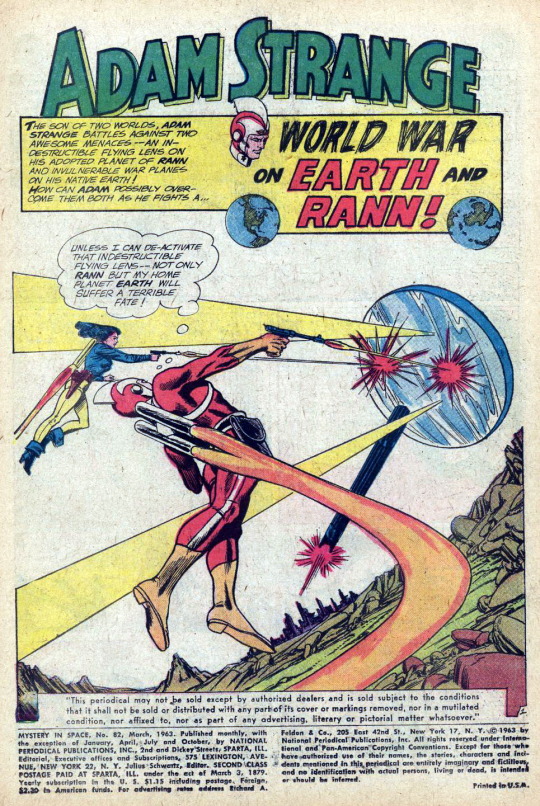

GIANT MAGNIFYING GLASS
Science Fiction (March 1941) / Mystery in Space (March 1963)
#magnifying glass#pulp art#adam strange#thorp#carmine infantino#helen weinbaum#1941#1963#gardner fox#robot#pulps did it first
3 notes
·
View notes
Text

SYD SHORES War Criminals, August 1963
Sydney Shores (1916 – June 3, 1973) was an American comic book artist known for his work on Captain America both during the 1940s, in what fans and historians call the Golden Age of comic books, and during the 1960s Silver Age of comic books.
Syd Shores began drawing in childhood, fascinated by the comic-strip art of Alex Raymond's Flash Gordon and Hal Foster's Prince Valiant. He went to graduate from Brooklyn's Pratt Institute, where he had met his wife-to-be, Selma. After working seven years at his uncle's whiskey bottling plant until it closed in 1940, he became an assistant at the studio of Selma's cousin, the comic book packager Harry "A" Chesler, working under comics artists Mac Raboy and Phil Sturm. "For months I was just a joe-boy, watching and learning and helping wherever I could. I studied Mac Raboy for hours on end — he was slow and meticulous about everything, doing maybe only a single panel of artwork a day, but it was truly beautiful work. After four months I tried my own hand at work, doing a seven-page piece called 'The Terror'. I was proud of it then, of course, but in looking back it really was a terror!"
"The Terror" still held enough promise that it saw print in Mystic Comics #5 (March 1941) from Timely Comics, the 1940s precursor of Marvel Comics, and went on to make other appearances. Timely editor Joe Simon hired Shores as the fledgling company's third employee.
1 note
·
View note
Photo

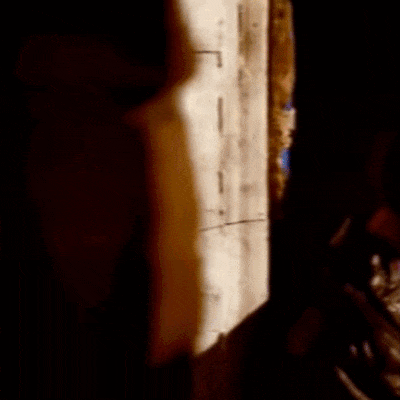



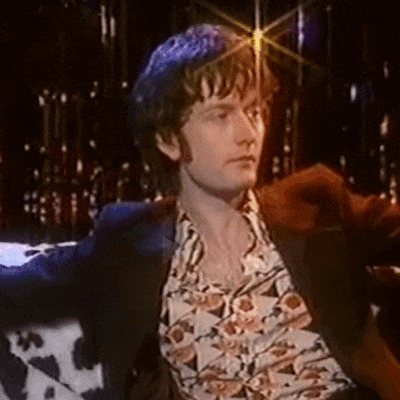
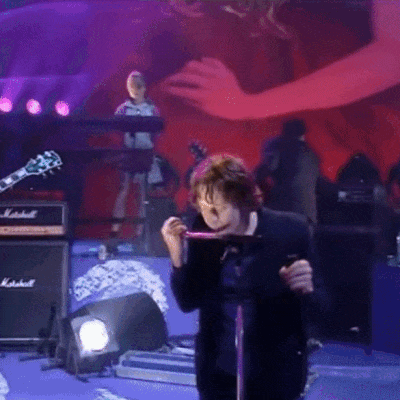


HAPPY BIRTHDAY JARVIS COCKER [SEP. 19TH 1963]
Jarvis Cocker is a musician and broadcaster from the north of England. He formed the band Pulp in 1978 while at secondary school. They went on to become one of the most successful British groups of the 1990s. Between 2009 and 2017 he presented the BBC 6 music program Jarvis Cocker's Sunday Service as well as the ongoing award-winning BBC Radio 4 documentary series Wireless Nights. He has honorary doctorates from Sheffield Hallam University and Central Saint Martin’s School Of Art (which he attended from 1988-91). His lyric collection Mother, Brother, Lover was published in 2011. Good Pop, Bad Pop is the first work of long-form prose. He decides his time between Paris, London and the Peak District. His star sign is Virgo - The dust jacket from Jarvis’ book, Good Pop, Bad Pop
#*#jarvis cocker#pulp#britpop#HAPPY BIRTHDAY MY DEARLY BELOVED!!!#i love you! i love you!! i love you!!!!!#can u believe this is my first ever post i've made of jarvis for my blog??? insane!!!!!!!#finally get to celebrate him on his own special day!!!!!!
335 notes
·
View notes
Text
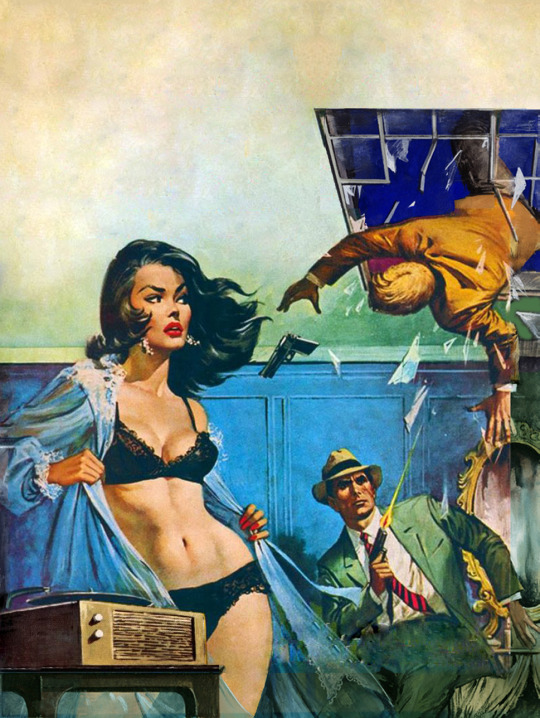
For Men Only Sep 1963
Charles Copeland
106 notes
·
View notes
Text
‘Shortsighted!’

Original artist: Dan DeCarlo
Original source: ‘Humorama’ (1963)
#pin up style#pin up art#comic book art#pin up cartoon#good girl art#pulp art#comic strip art#Dan DeCarlo#humorama#1960s#1963
48 notes
·
View notes
Text

At the Time of Sight
Fic by @souverian-are-we | Art by @greenfiend
Mature | 15k words
November, 1963. Will Byers and Mike Wheeler are two rangers stationed at a remote fire lookout tower in the mountains. When Mike returns to their 100-foot high home and discovers Will missing, he has a few leads. One is the paranoia Will has been exhibiting over the past few weeks, insisting he sees something in the trees. The other lead is the growing tension between them, their affection for each other becoming hard to hide as they spend every day and night in the same glass room.
Warnings: Major Character Death, Graphic Violence, Period-Typical Homophobia, Mental Health Issues
Read on Ao3 | View Art
Read an excerpt below:
The skyline above Mt. Hawkins was clear, and the setting sun cut through the cold November sky, bathing the fire station’s cab thickly in orange light.
Will Byers' long khaki-clad limbs curled into a chair by one of the south side windows, glass extending from floor to ceiling on every side of their home. Will balance binoculars in one hand and a notebook in the other, scribbling. On the other side of the room, Mike Wheeler flopped onto his bed, radio in hand. After dinner, the pair had settled into comfortable silence, retreating to opposite walls and finding their own occupations.
Mike and Will had been stationed in their mountain perch for a little more than eighteen months. They shared the same duty, to keep vigil over the peaks and valleys that surrounded their tower, to know every contour and dip of the landscape so impossibly well that they could instantly detect signs of fire in the trees.
For at least three days out of seven, both beds in the 160-square-foot fire tower were filled, and Mike had someone to keep him company beyond news transmissions and pulp novels.
Mike’s radio crackled as he tuned it, the dial buttons smooth and worn under his hands. The stiff mattress creaked beneath him as he shifted his position, extending the radio’s antennae. He caught the end of an advertisement, and then the familiar sound of CBS Evening News filled the little cab.
"This is Walter Cronkite in our newsroom; and there has been an attempt, as perhaps you know now, on the life of President Kennedy."
Mike sat up, turning up the volume on his radio.
"He was wounded in an automobile driving from Dallas Airport into downtown Dallas, along with Governor Connally of Texas. They've been taken to Parkland Hospital there, where their condition is as yet unknown."
“Will,” Mike tried to find Will’s eyes, but he was looking down, writing at almost a frantic pace in that little book. “Will, Kennedy was shot.”
Read more on Ao3 >
10 notes
·
View notes
Text
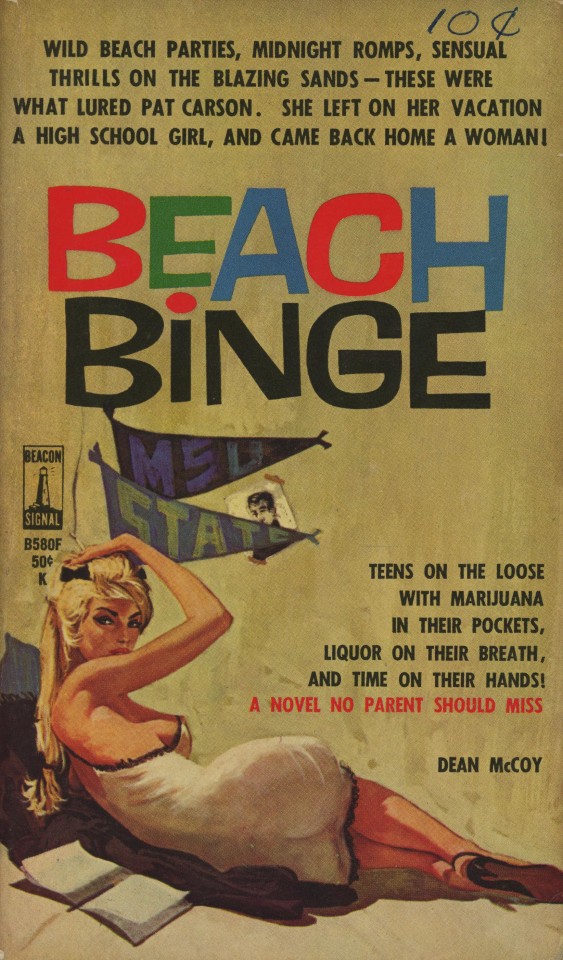
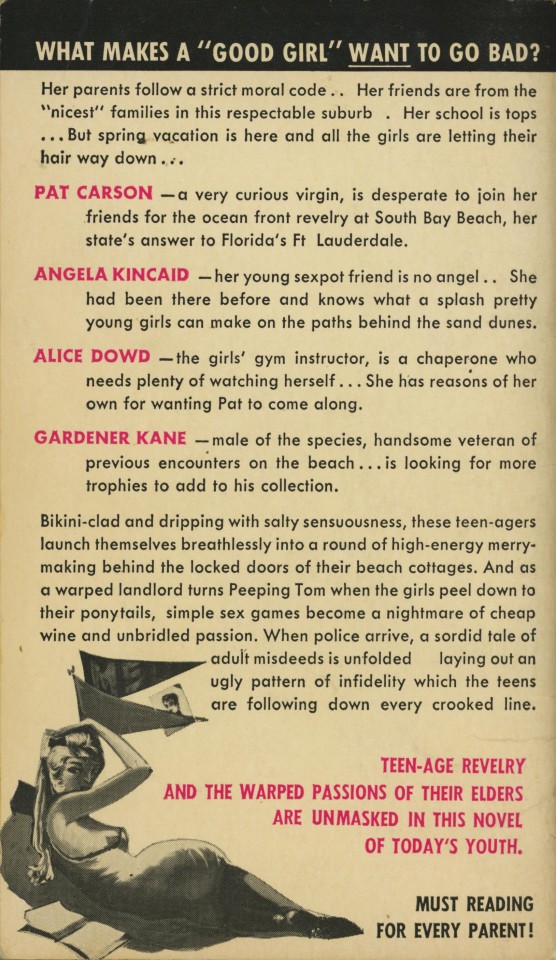
Beach Binge by Dean McCoy
Beacon Books B580F, 1963
Cover art uncredited
47 notes
·
View notes
Text
An Introduction to Film Noir

What is Film Noir?
Film noir is a genre of films that emerged in the United States in the 1940s and 1950s, characterized by its dark themes, shadowy cinematography, and morally ambiguous protagonists. The term "film noir" is French for "black film," which accurately describes the bleak and pessimistic outlook of these films.
The origins of film noir can be traced back to a number of factors, including the post-World War II mood of anxiety and disillusionment, the influence of German Expressionism on Hollywood filmmakers, and the rise of hard-boiled crime fiction in pulp magazines.
One of the defining features of film noir is its visual style, which often utilizes high-contrast lighting, deep shadows, and skewed camera angles to create a sense of unease and disorientation. This style was influenced by the German Expressionist movement, which emphasized subjective emotion and the use of stylized visuals to convey psychological states.

Examples of Film Noir
Some of the most famous examples of film noir include "Double Indemnity" (1944), "The Maltese Falcon" (1941), and "The Big Sleep" (1946). These films often feature a lone male protagonist, a femme fatale, and a complex, labyrinthine plot that twists and turns until its final, often ambiguous resolution.
American film noir is perhaps the most well-known and influential of all the variations of the genre. Emerging in the 1940s and 1950s, American film noir was characterized by its dark, shadowy visuals, morally ambiguous protagonists, and a focus on crime and corruption. These films often portrayed a cynical and pessimistic view of society, with a sense of disillusionment and anxiety permeating throughout.
One of the most significant American film noir directors was Billy Wilder, who directed classic films such as "Double Indemnity" (1944) and "Sunset Boulevard" (1950). These films featured complex and flawed characters, intricate plots, and a sense of psychological tension that has become synonymous with the genre. Other notable American film noir directors include Fritz Lang, with films such as "The Big Heat" (1953) and "Scarlet Street" (1945); and Robert Siodmak, with films such as "The Killers" (1946) and "Criss Cross" (1949). These films have had a lasting impact on American cinema and continue to be celebrated for their artistic achievements and influence.
American film noir has had a significant impact on the art of cinema, influencing filmmakers around the world and continuing to captivate audiences to this day. Its blend of stylish visuals, complex characters, and gritty subject matter has helped to create a unique and enduring genre that has stood the test of time. With its focus on the darker aspects of human nature and society, American film noir remains an essential part of the cinematic landscape, offering a glimpse into the human experience that is both captivating and unforgettable.
International Film Noir
Film noir was not limited to Hollywood, however, and a number of other countries also produced their own versions of the genre.
In France, film noir is known as "policier noir" or "film policier," and is characterized by its use of urban settings, existential themes, and a focus on psychological realism. One of the most well-known French film noir directors is Jean-Pierre Melville, who is famous for films such as "Le Samouraï" (1967) and "Bob le Flambeur" (1956). These films often feature characters struggling with personal demons and moral ambiguity, and are notable for their minimalist style and existential themes.
In Japan, film noir is referred to as "yakuza-eiga" or "gangster films," and is characterized by its emphasis on honor, loyalty, and violence. One of the most famous Japanese film noir directors is Akira Kurosawa, who directed films such as "Stray Dog" (1949) and "High and Low" (1963). These films often explore the darker side of Japanese society, including the yakuza underworld and the criminal justice system.
Other countries that have produced their own versions of film noir include Germany, with films such as "M" (1931) and "The Third Man" (1949); Italy, with films such as "Accattone" (1961) and "The Good, the Bad and the Ugly" (1966); and the UK, with films such as "Brighton Rock" (1947) and "Get Carter" (1971). Each of these countries has put its own unique spin on the genre, while still maintaining the essential characteristics of film noir.
Modern Film Noir
Overall, the international influence of film noir is a testament to its enduring power and appeal. By exploring the darker side of human nature and society, film noir has managed to capture the imaginations of audiences around the world, and continues to inspire filmmakers to this day.
Film noir has had a lasting impact on the art of cinema, influencing everything from crime dramas to science fiction films. Its legacy can be seen in the work of directors such as David Lynch and Quentin Tarantino, who have both cited the genre as an influence on their own work.
In recent years, film noir has also experienced a resurgence in popularity, with new films such as "Brick" (2005) and "Drive" (2011) drawing on the genre's themes and visual style.
In conclusion, film noir emerged as a response to the anxieties and uncertainties of the post-World War II era and has since become a highly influential and enduring genre of cinema. Its themes of moral ambiguity, psychological tension, and visual stylization continue to captivate audiences and inspire filmmakers around the world.
3 notes
·
View notes
Text
Black characters of Marvel Comics

If you can't tell over the past few blogs, I grew up as a DC Comics fan, watching the cartoons like Batman the Animated Series, Static Shock, and Justice League Unlimited. We could even spend another week going over the black characters in DC's Independent Vertigo Imprint, black superheroes from the Indie Comics studio WildStorm, like Deathblow, or other black DC characters like Green Lantern John Stewart, Bronze Tiger, Steel, and Mr. Terrific. Instead, we are finally going over the black history of Marvel comics, all be it, briefly.
Marvel started out as Timely Comics in 1939 by pulp magazine publisher Martin Goodman to capitalize on the growing comic book and superhero market, creating Golden age superheroes like the Android Jim Hammond who was the Original Human Torch, Captain America, and the Sub-Mariner. Superheroes fell to the wayside after WWII, so in 1951 Timely Comics became Atlas Magazines, publishing Sci Fi and Adventure comics more than superheroes. One of their characters was Prince Waku of the Bantu, from the anthology series Jungle Tales, first released in 1954. During the early 1960s Stan Lee and artists like Jack Kirby and Steve Ditko led Atlas Magazines into becoming Marvel Comics, their first black hero was not Black Panther but Gabe Jones, a soldier a part of Nick Fury's Howling Commandos, coming out in Sgt. Fury #1 in 1963. The next character is the infamous Black Panther, T'Challa first leaped on the newspaper print in Fantastic Four #52 in 1966, inviting Marvel's first family to help him defeat the dastardly Klaw in his home country of Wakanda.
Three years later Captain America's sidekick Flacon flew to the page Captain America (1968) #117 in 1969, helping him defeat the Exiles and the Red Skull. Later, inspired by the Black Exploitation films like Shaft, and Superfly, Marvel published Luke Cage, aka Power Man, this one was a street level hero who patrolled the streets of Harlem and eventually partnered with the martial arts hero Iron Fists. Later in Power Man (1974) #24 Dr. Bill Foster's superhero alter ego Black Goliath was first introduced, a superhero who can become a giant and helped Luke Cage take on the Circus of Crime. A year later Marvel published Giant-Size X-Men #1, by writer Len Wein and artist Dave Cockrum, the first appearance of heroes like Colossus, Nightcrawler, and the iconic mutant hero Storm. Not all of Marvel's characters in the 1960s and 70s were as iconic as Storm and Black Panther, one of the most niche characters over the years is Jericho Drumm, aka Brother Voodoo from Strange Tales #169 in 1973. Created by Len Wein, John Romita Sr., Stan Lee, and Roy Thomas, Jericho was a practicing psychologist, who visited his brother in Daniel in their home country Haiti. After Daniel died from the hands of a rival Voodoo priest, Jericho visited his brother's mentor Papa Jambo, becoming the hero Brother Voodoo.
Marvel has had many more black characters added to their roster over the years. For this project it feels important to add almost all of them throughout the 60s and 70s, regardless of their status as a hero, villain, or supporting role. By the mid to late 2000s it's important to mainly cover the bigger events, primarily ending on Miles Morales Spider-man for simplicity.
0 notes